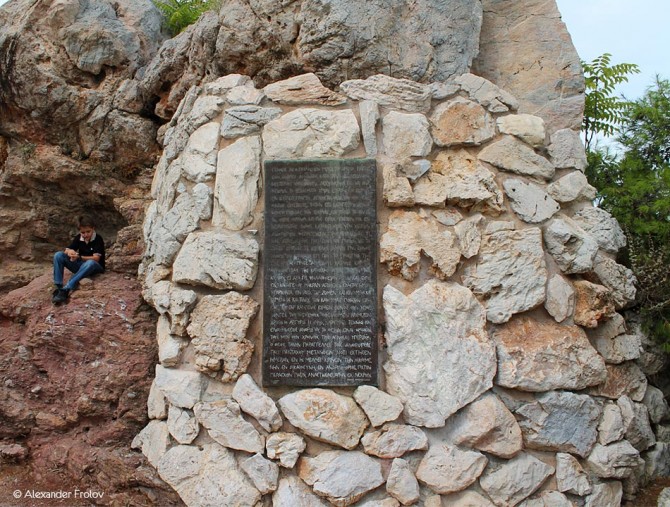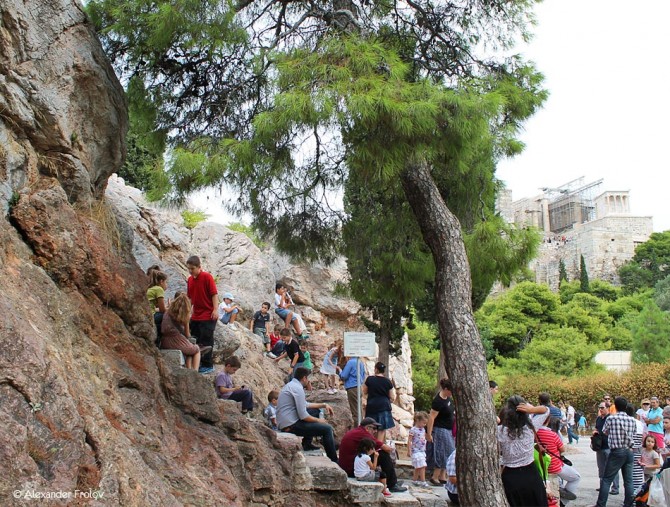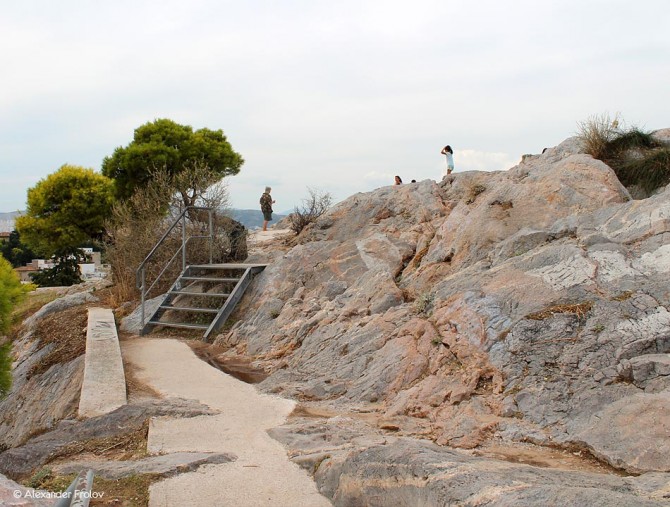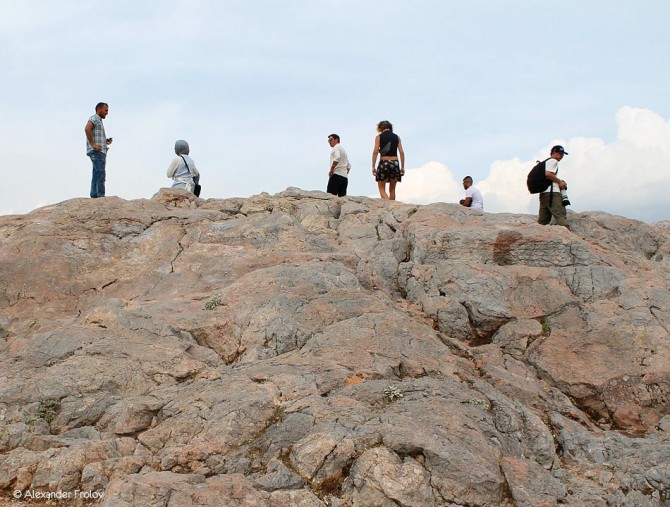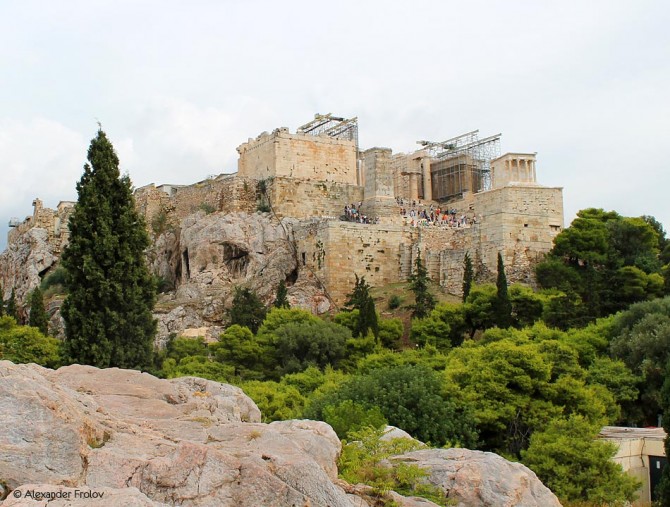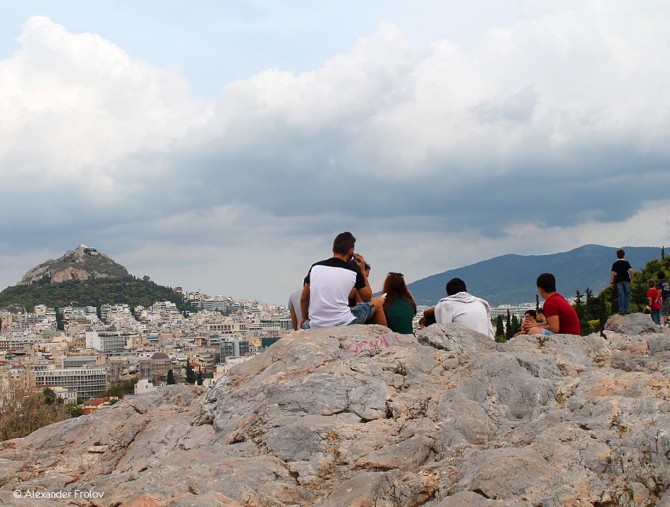Ареопаг
Ареопаг возник в эпоху родоплеменного строя как совет старейшин. Археологические раскопки в северной стороне холма выявили кладбище с куполами и гробницами, начиная с микенского и геометрического периодов (1600-700 года до н.э.). Этот факт позволяет сделать предположение, что здесь находилось наиболее древнее кладбище города. Так или иначе, суд на холме, вероятно, существовал по крайней мере с эпохи первой мессенской войны (война между Спартой и Мессенией продолжалась в период 743 года до н.э. по 724 год до н.э.). Согласно Павсанию именно здесь мессенцы пытались разрешить свои разногласия.
Постоянно местом суда Ареопаг стал в период правления Солона (начало VI века до н.э.). Он состоял из 9 пожизненных членов, пополнявшихся из бывших архонтов, кандидатов в которые намечал и избирал ареопаг. Ареопаг обладал широкой политической, судебной, контролирующей и религиозной властью. Главными функциями ареопага было наблюдение за соблюдением законов и суд по делам, связанным с убийствами. Ограничение власти ареопага началось с развитием афинской рабовладельческой демократии. Реформа Эфиальта (462 год до н.э.) ликвидировала значительную долю политической власти и влияния Ареопага, сохранив за ним, впрочем, право наблюдения за законами и функции суда по некоторым уголовным и религиозным преступлениям. Ареопаг оставался авторитетнейшим властным и судебным органом Древних Афин вплоть до их падения.
Довольно важное событие произошло в 51 году н.э., когда Апостол Павел избрал Аэропаг местом обращения в афинянам. Двое из них, Иротей и Дионисий Аэропагит, стали первыми христианскими епископами Афин. После смерти они были причислены к лику святых.
К сожалению практически никаких памятников на холме не сохранилось. Лишь один кубического вида валун был идентифицирован с алтарем Афины. Также предположительно два камня были сидениями для обвиняемого и обвинителя во время слушаний, а вокруг холма находились дома философов неоплатонцев в IV-V веках до н.э. Ко всему прочему стоит добавить, что с этого холма открывается захватывающий вид на Акрополь и на современные Афины. Вход на холм бесплатный.
Как добраться до холма Аэропаг:
- на метро, станции Акрополи и Монастираки, улица Теорияс
Фото и текст: Александр Фролов
The Areopagus Hill
Almost a breath away from Acropolis, at the northwestern side of its entrance, a small rocky hill stands. Its name is Areopagus Hill and in the antiquity it was the seat of the Superior Court of the Ancient Athens.
According to mythology in this hill was where the first murder trial took place, in which the Gods of Olympus tried Aris for killing the Poseidon’s son, Allirotheos. According to historical evidence, though, we do not know when exactly the hill began to be used as a court and which could be its previous use. Archaeological excavations in the north side of the hill brought to light a cemetery with domed and carved tombs dating back to the Mycenaean and Geometric period (1600 - 700 BC). So maybe the hill was originally the most ancient cemetery of the city. However, the court in the hill probably existed at least since the era of the First Messenian War (the war between Sparta and Messenia, which began in 743 BC and ended in 724 BC), because, according to the Ancient Greek traveler and geographer Pausanias, that is where the Messenians wanted to appeal in order to resolve their differences.
What we know for sure is that Areopagus was established as a special permanent court in the time of the great statesman and lawmaker Solon (early 6th century BC) and that in the 5th century, when the Ancient Athens adopted the Democracy, the Areopagus was retained as court, hearing exclusively murder cases.
As for the name Areopagus, it derived from the world Pagos which in the Ancient Greek meant “Rock” and the name Aris, which was either referred to the God Aris or to Ares (also known as Erinyes or Furies) who were the female chthonic deities of vengeance. In any case, the name of Areopagus was originally adopted by an administrative body of the aristocracy of the 7th century BC, which was based in this hill.
Centuries later, in 51 AD, the Apostle Paul picked Areopagus to preach the Christianity to the Athenians for the first time. From all the people who attended his sermon, only two members of Areopagus were proselytes: Ierotheos and Dionysios Areopagitis, who both became the first Athenian bishops and were proclaimed saints after their deaths.
Knowing the historical importance of the Areopagus, if you expect to see the remains of a magnificent monument on the top of the hill, you will probably be disappointed. What is preserved today is an almost cubic boulder in the shape of altar, which has been identified either with the altar of Aryan Athina or with one of the two seats-stones where the accused and the accuser were sitting during the hearing. According to descriptions, in the Areopagus there were also altars dedicated to the Amazons (daughters of Aris) and to Voreas, who was a mythological hero, however no traces of them have been discovered. In the northern foot of the hill, however, you will see a cave, which has been recognized as a place of worship of the Eumenides (euphemistically name of Furies), while under and around the hill there were the notorious houses of the neoplatonic philosophers (late 4th-early 5th century BC).
Apart from the historical and archaeological importance, the Areopagus Hill is one of the greatest and most visited highlights of Athens also due to the breathtaking view of the city you can enjoy from there. Just remember to wear flat and comfortable shoes before the visit, because the ascent from the carved in the rock stairs is not a piece of cake. Or you can just use the metallic stair, if you do not want to do it like the Ancient Athenians (who did not wear high heels anyway).
The Areopagus Hill, Theorias Street, Athens, metro stations Syntagma or Monastiraki
Τext: Marilou Pantazi

